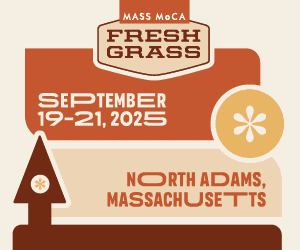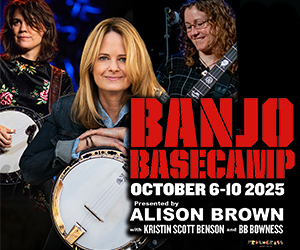The Stray Birds

In 2012, The Stray Birds flew onto the folk music circle with their eponymous debut. The trio ” Maya de Vitry, Oliver Craven, and Charlie Muench ” came out of Lancaster, Pennsylvania, which is, by no obvious, account a hotbed for roots music. But the threesome found not only each other, but also a sound that worked… really well. Though two of the three Birds have migrated to other geographic locales, they continue to play and tour together behind their latest album, ‘Best Medicine.‘ It, too, has met with a favorable response.
The Stray Birds stopped by Folk Alley’s studio for a Session taping in November of 2014 (watch videos and listen to the interview below), and I had a chance to ask de Vitry a few additional questions.
How did it feel to be so warmly embraced with your first record? And what kind of pressure does that put on the second?
This second record has truly been an opportunity for us to write material with this band in mind ” to write for our voices, and the textures of our instruments. We were still just getting to know each other musically with the first record, but it was certainly encouraging to find that the music we were making resonated with people. As we traveled around with The Stray Birds, we found a lot of inspiration for the songs on Best Medicine. The new songs were making their way into the sets, and the audience reaction was exciting. We were beginning to have some really beautiful moments in our live performances, and certainly felt some pressure to try to capture that on the second album. The new record has a really live feel ” our voices blending and bleeding together ” because we opted out of separation and headphones. Someone recently handed us a real compliment: “The Stray Birds are tighter and looser every time I hear them,” some guy said after a recent show at Rockwood Music Hall in New York City. It made perfect sense to us.
Was there a moment when the three of you clicked in as the Stray Birds, a moment when you knew you were a band and not just some friends playing together?
It could very well have been October 20, 2011, when we opened for Pokey LaFarge in our hometown of Lancaster, Pennsylvania. There is a photograph of us on stage together that night, and it’s as if we can’t hide the feeling. It was strong enough to quit a couple other things and start working on a record three months later.
Like you mentioned, you guys found each other in Lancaster. Now that you’re breaking out ” and stepping out ” is that scene strong enough to keep you inspired or are there plans to relocate to a more robust creative community?
Lancaster is very much this band’s home, and may always feel that way. It feels like we’ve mostly been living on the road these past few years, but Charlie still pays rent in Lancaster, I pay rent in Asheville, North Carolina, and Oliver in Nashville, Tennessee, these days. I’m drawn to Nashville, as well, and am planning to make that transition in the new year.
Who are some of the artists you model your harmonies after?
The Everly Brothers, the Band, Gillian Welch & David Rawlings, the Beatles, the Stanley Brothers…
What is it about bluegrass and folk that continues to be appealing to young musicians?
I grew up being immersed in this style of music, in a music-loving and musical family, and going to music festivals was the hands-down highlight of every childhood summer. I could go out in a field or out in the woods with hundreds of other people who loved music, and these songs and tunes felt timeless and limitless out there, in between the tents and out under the stars. For me, that setting has never lost its magic. I think there must be some appeal in the simplicity of it, or the big choruses that seem to invite somebody wandering by a campsite to join in. You can create a party in a field with these brilliant acoustic instruments and some big voices and some old songs.




